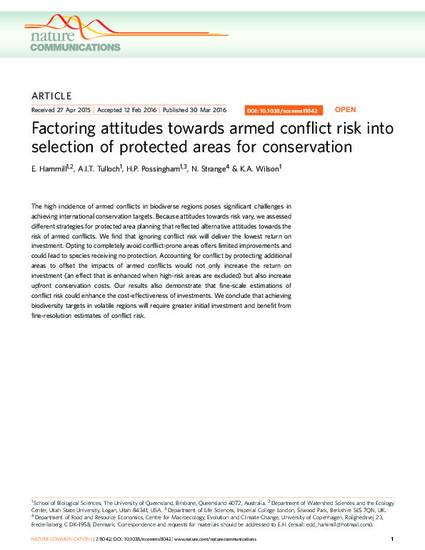
Article
Factoring attitudes towards armed conflict risk into selection of protected areas for conservation
Nature Communications
(2016)
Abstract
The high incidence of armed conflicts in biodiverse regions poses significant challenges in achieving international conservation targets. Because attitudes towards risk vary, we assessed different strategies for protected area planning that reflected alternative attitudes towards the risk of armed conflicts. We find that ignoring conflict risk will deliver the lowest return on investment. Opting to completely avoid conflict-prone areas offers limited improvements and could lead to species receiving no protection. Accounting for conflict by protecting additional areas to offset the impacts of armed conflicts would not only increase the return on investment (an effect that is enhanced when high-risk areas are excluded) but also increase upfront conservation costs. Our results also demonstrate that fine-scale estimations of conflict risk could enhance the cost-effectiveness of investments. We conclude that achieving biodiversity targets in volatile regions will require greater initial investment and benefit from fine-resolution estimates of conflict risk.
Disciplines
Publication Date
2016
DOI
doi:10.1038/ncomms11042
Citation Information
Edd Hammill. "Factoring attitudes towards armed conflict risk into selection of protected areas for conservation" Nature Communications Vol. 7 Iss. article 11042 (2016) Available at: http://works.bepress.com/edd-hammill/35/
